 |
| A very snowy winter |
Of course in milder places, like the southern United States where winters are normally very mild, the cold that was experienced earlier this year will kill a lot of tender plants.
However in our northern climates (USDA Zone 5 and less), for perennials a good winter is one with lots of snow that covers the ground all winter. While a bad winter is one with patchy snow on ground that goes through cycles of freeze and thaw.
A case in point is the winter of 2016-2017. This was one of the mildest winters we have known in this part of the world, with several thaws in the coldest months of the year, something we are not used to and something we paid for dearly later on.
Many tender plants that normally spend a cozy winter under a blanket of snow started to grow in the mild spells and were killed when cold seasonal weather returned. Here are a few examples of plants that did not survive the 2016/17 winter because of the irregular snow cover that winter.
 | |
| The Mount Atlas Daisy (Anacyclus pyrethrum) |
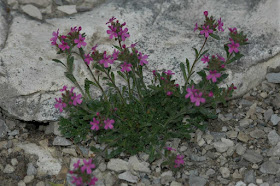 |
| Although a zone 4 plant, Erinus alpinus still did not make it |
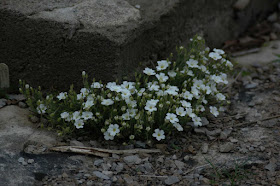 |
| Sandwort (Arenaria montana) |
 |
| Isotoma fluviatilis |
Other plants did survived but barely. Some, especially bulbs, were in large part decimated.
The clump of Crocosmia "Lucifer" pictured below in 2016 was very lush and had been increasing for many years. In the summer of 2017, only a few sprays were left. My two other cultivars of Crocosmia, less hardy than"Lucifer", completely vanished.
The same thing happened to all of these:
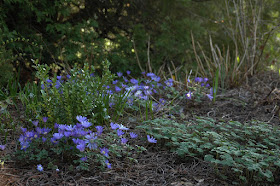 |
| Anemone blanda |
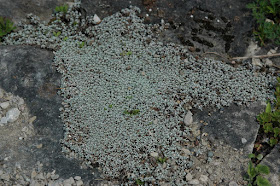 |
| Raoulia australis had taken about 10 years to get that size (20 x 20 cm). Not much of it was left in 2017 |
 |
| Majus reptans is more vigorous (invasive for some of you) - fortunately a small patch of it was left |
 |
| Cyclamen coum - a plant I will not attempt to grow again, as I had to remember to shovel off the snow covering it each spring as here it bloomed under the snow! |
I could add, for instance, Agapanthus or Trifolium repens 'Atropurpureum'.
Many of the plants listed above are rock-garden plants. Although on the whole, these are very cold-hardy, a warm spell in winter will often do them in.
With a good snow cover, I can grow in my zone 5A garden, a better selection of plants than I could in my previous zone 6B garden, provided we can avoid winter thaws.
We had a fair bit of rain last week. Fortunately the snow accumulation was so thick that plants are still well-insulated. We can only hope it will stay that way till late March.
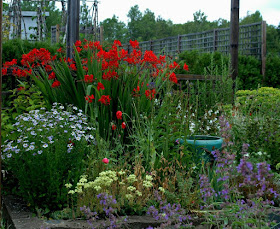
So good to hear from you again, Alain! I hope your snow cover dwindles minimally! I received a Helleborus from a dear friend, and got it outside the week of Christmas. I have complete Zone 6 confidence in it as a new attraction to my cottage garden. We shall see, shall we not.
ReplyDeleteThanks Joanne and good luck with this hellebore.
DeleteOur plants hardly ever experience a thick covering of snow but fortunately we don’t have intensely cold weather either. It in very wet, soggy conditions that some of our plants suffer.
ReplyDeleteI expect that with climate change we are all in for some changes in our weather patterns.
DeleteGreat post. Unfortunately, here in Southern Wisconsin, we had a stretch of single digit/subzero weather (less than 0F/-18C) for about two weeks with very little snow cover. Then we warmed up above freezing for about a week, and then back to bitter cold. My garden is covered with Oak leaves, so I hope that will help. But I'm sure many plants will perish this year. I hope your garden will fare well, too.
ReplyDeleteIt is a question of luck, isn't it. Friends south of us have lost all their snow and we might very well lose ours to before the winter is over. Yet, in a not distant past, we never had any thaw in winter. Your oak leaves should make a big difference.
DeleteSo far so good here with fairly steady cold and only a few ups and downs. Right now everything is encased in ice and then covered in snow. I don't think the cyclamen will approve.
ReplyDeleteYes, I think the cyclamen will balk. I still have one. The others succumbed to last winter. Yet, a local friend of mine had beautiful ones that selfseed but her site is special (steep bank under trees that get 3-4 hours of sunshine a day with loss of compost added every year).
DeleteThat deep snow is good for a lot of things, but looking ahead I could be worried about the coming forecast. We've moved into Meaford, so i the spring we have to create an entirely new (tiny) garden.
ReplyDeleteI hope you enjoy Meaford. We will also have to think about living in a less isolated place before long.
DeleteQuoi? Vous êtes toujours dans la péninsule? Et le sud?
ReplyDeleteIts text book knowledge here in the UK that a blanket of snow protects alpines - and other plants - from severe cold. Your personal experience brings it home how true it is. Our sympathy for your losses.
ReplyDeleteAnd welcome back Alain!
Tanks Roger. However many such losses are plants I should not have attempted to grow in the first place. Your reach will always exceed your grasp!
DeleteI'm surprised that you can grow Agapanthus outside! Which variety is it?
ReplyDeleteCrocosmias do survive some of our winters in Estonia but not each year.
Nice to hear from you again, Alan!
I grew it for many years thanks to the snow cover that was very reliable. Unfortunately I do not know what variety it was because I bought it from a local gardener. We used to grow all sorts of things that could not be grown in much warmer areas. The last winter pretty much decimated most of those.
ReplyDeleteHello Alain, it's good to hear from you again. You've had so much snow, we've had pretty much none, there have been some flurries and right now, the sun is shining strongly and it's actually warm. The danger for us is a winter where there's so much rain that the ground is always waterlogged, rotting the roots of plants. We've lost more plants that way than any other and it's one of the reasons our borders are mounded up, to lift them above ground level.
ReplyDeleteOur garden also tends to get waterlogged in late winter and spring. This is why I have to used raised beds.
DeleteI am surprised you are zone 5a - I thought so far north you would be more like zone 4. You are right - a good consistent snow cover is far better than snow falling, then melting, then falling again.
ReplyDeleteWe are on a narrow peninsula with Lake Huron on one side and Georgian Bay (as big as a great lake) on the other. This has a tempering effect.
DeleteHi Alain, You and Lorne must be back form your sojourn in Italy, but I doubt that you are home in the Bruce. Nice photo of the snow at your garden. The thaw here has reduced the snow cover dramatically. Because of the extended cold it is doubtful that the Rhododendron buds will open this year and the Japanese cherries will be a write off for bloom.
ReplyDelete